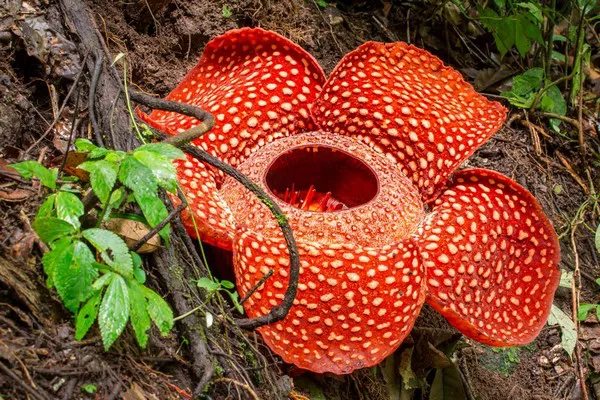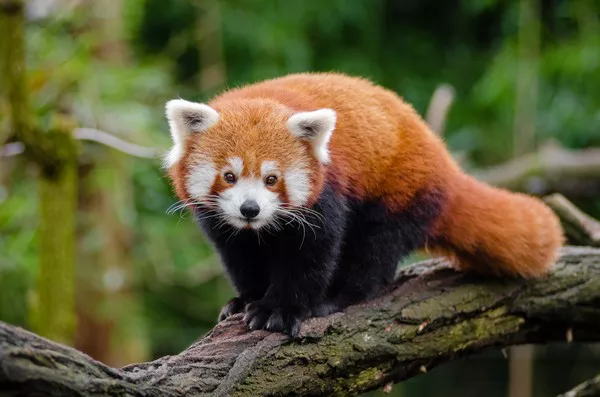In the enchanting realm of botanical wonders, flowers captivate our senses with their vibrant colors and delicate fragrances. While many blossoms exude pleasant scents, there exists a fascinating world of flowers that challenge our olfactory senses with their pungent and distinctive aromas. This article embarks on a fragrant journey through the realm of the 10 smelliest flowers in the world, exploring the unique characteristics that make each bloom a testament to the diverse and often surprising world of floral fragrances.
10 Smelliest Flowers in the World
1. The Corpse Flower (Amorphophallus titanum):
Known as the “Corpse Flower” or “Titan Arum,” Amorphophallus titanum holds the title of the world’s largest unbranched inflorescence and, fittingly, one of the smelliest flowers. Native to the rainforests of Sumatra, this colossal bloom produces an odor reminiscent of rotting flesh, earning it the moniker “Corpse Flower.” The foul smell serves a purpose – attracting carrion beetles and flesh flies, which pollinate the flower.
Despite its malodorous reputation, the Corpse Flower draws crowds to botanical gardens worldwide during its rare blooming events. The spectacle of its enormous, burgundy-hued spathe unfurling and the overpowering scent make it a unique and unforgettable experience for those willing to endure the stench.
2. The Rafflesia (Rafflesia arnoldii):
Hailing from the rainforests of Southeast Asia, the Rafflesia arnoldii claims the title of the world’s largest individual flower. This parasitic plant, devoid of leaves or stems, boasts a captivating yet repulsive odor resembling that of a decomposing animal. The scent aims to attract flies and carrion beetles, facilitating pollination.
The Rafflesia’s large, crimson-petaled blooms can measure up to three feet in diameter, providing a visually stunning contrast to its less-than-appealing fragrance. Despite its olfactory challenges, the Rafflesia remains a sought-after botanical curiosity for those seeking encounters with nature’s more unconventional wonders.
3. The Stinking Passionflower (Passiflora foetida):
In the world of passionflowers, Passiflora foetida stands out for its distinctively unpleasant aroma. Native to the Americas and commonly known as the “Stinking Passionflower” or “Wild Maracuja,” this vine produces small, greenish-white flowers with an odor often likened to that of rotten meat.
While the Stinking Passionflower may lack the grandeur of some other foul-smelling blooms, its unique fragrance plays a role in attracting specific pollinators, such as carrion beetles. The plant’s ability to thrive in various environments showcases the resilience and adaptability of nature’s aromatic creations.
4. The Dead Horse Arum Lily (Helicodiceros muscivorus):
Native to the Mediterranean region, Helicodiceros muscivorus, colloquially known as the “Dead Horse Arum Lily” or “Corpse Plant,” is a peculiar and malodorous member of the arum family. This plant earns its gruesome name from the pungent scent it emits, resembling that of a decaying animal.
The Dead Horse Arum Lily employs its foul aroma to attract flies, which act as pollinators. Despite its unsavory fragrance, this plant showcases the intricate strategies that flora employ to ensure their survival in diverse ecosystems.
5. The Eastern Skunk Cabbage (Symplocarpus foetidus):
Venturing into North America, the Eastern Skunk Cabbage, Symplocarpus foetidus, earns its name from the fetid odor it releases, reminiscent of a skunk’s spray. This hardy perennial emerges in wetlands and marshy areas during late winter or early spring, producing a distinctive hooded spathe that encases a spadix.
The Eastern Skunk Cabbage generates heat, allowing it to melt through snow and ice as it blooms. While the plant’s smell may deter herbivores, it attracts scavenging insects, such as flies and beetles, that aid in pollination. This fascinating adaptation showcases nature’s ability to create botanical marvels tailored to specific environments.
6. The Bulbophyllum phalaenopsis:
Within the vast orchid family, Bulbophyllum phalaenopsis stands out as a notably smelly species. Native to New Guinea, this orchid produces flowers with a fragrance often described as similar to that of rotting meat. The scent, which emerges during the plant’s blooming period, serves to attract carrion flies, essential for pollination.
Despite its unpleasant aroma, the Bulbophyllum phalaenopsis captivates orchid enthusiasts with its intricate and exotic appearance. This species exemplifies the diverse strategies orchids employ to ensure their reproductive success in the wild.
7. The Western Skunk Cabbage (Lysichiton americanus):
Similar to its Eastern counterpart, Lysichiton americanus, the Western Skunk Cabbage, is native to North America and possesses a foul odor reminiscent of skunk spray. This wetland-dwelling plant, also known as the “Yellow Skunk Cabbage,” produces large, cabbage-like leaves and a distinctive hooded spathe during its flowering season.
The Western Skunk Cabbage employs its repugnant scent to attract pollinating insects, primarily scavenging beetles. Despite its olfactory challenges, this plant serves a vital role in wetland ecosystems, providing shelter and sustenance for various wildlife.
8. The Durian Flower (Durio):
While renowned for its divisive fruit, the durian tree’s flowers also contribute to its notorious reputation. Native to Southeast Asia, the Durio species, particularly Durio graveolens, produces large, yellowish flowers with a smell described as a mix of turpentine and onions.
The durian flower’s powerful fragrance attracts nocturnal pollinators, such as bats and moths. While the durian fruit is either loved or loathed for its taste and aroma, its flowers showcase nature’s ability to create complex scents for specific ecological purposes.
9. The Yellow Skunk Cabbage (Veratrum californicum):
In North America, Veratrum californicum, or the “Yellow Skunk Cabbage,” stands as another example of a foul-smelling flower. Native to wetlands and mountainous regions, this plant produces clusters of yellowish-green flowers that emit a strong, unpleasant odor.
Despite its unappealing scent, the Yellow Skunk Cabbage plays a crucial role in its ecosystem, supporting various insects and wildlife. Its ability to thrive in challenging environments underscores the resilience of nature’s aromatic creations.
10. The Smelly Plant (Pseudognaphalium stramineum):
Commonly known as the “Smelly Plant” or “Old Field Balsam,” Pseudognaphalium stramineum is a wildflower found in North America. Despite its unassuming appearance, this plant releases a distinctly unpleasant odor when crushed or disturbed, often likened to the smell of dirty socks.
While the Smelly Plant may lack the grandeur of some other malodorous blooms, its peculiar fragrance adds to the diversity of nature’s olfactory palette. This unassuming wildflower serves as a reminder that even the more subtle members of the plant kingdom contribute to the intricate web of scents in the natural world.
See Also:10 WORLD’S MOST UGLIEST FLOWERS
Conclusion:
In the world of flowers, fragrance serves as nature’s aromatic signature, captivating and intriguing observers. The 10 smelliest flowers highlighted in this exploration showcase the diverse strategies that plants employ to attract specific pollinators, ensuring their reproductive success in various ecosystems. From the towering Titan Arum to the unassuming Smelly Plant, each bloom adds a unique note to the symphony of scents found in the botanical world. As we delve into the olfactory wonders of these remarkable flowers, we gain a deeper appreciation for the complexity, adaptability, and sheer ingenuity of nature’s aromatic creations.
You Might Be Interested In:










![10 Most Richest Cities in the United States [Revealed!]](https://www.validdownloads.com/wp-content/uploads/2023/12/Manjula-Pothos.webp)















